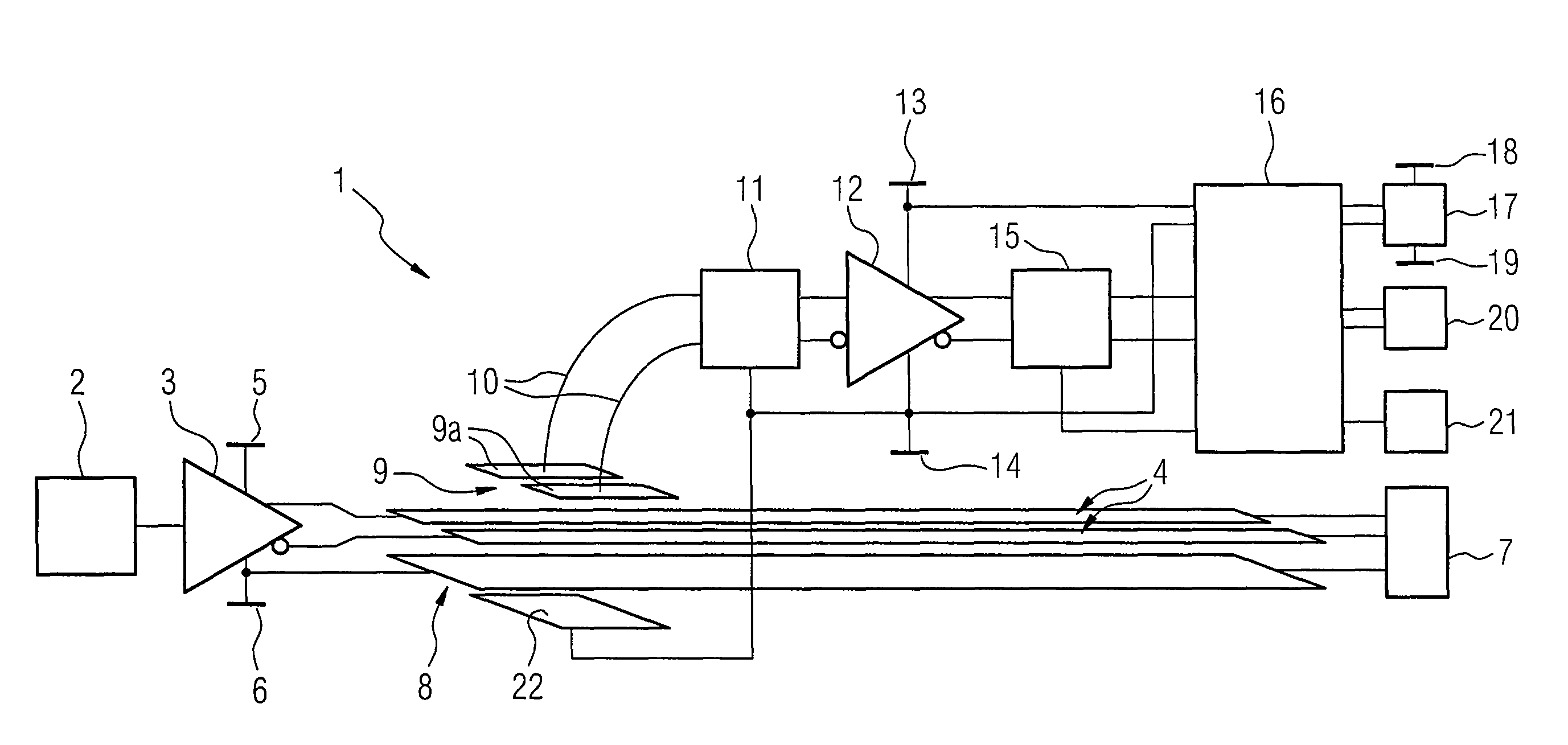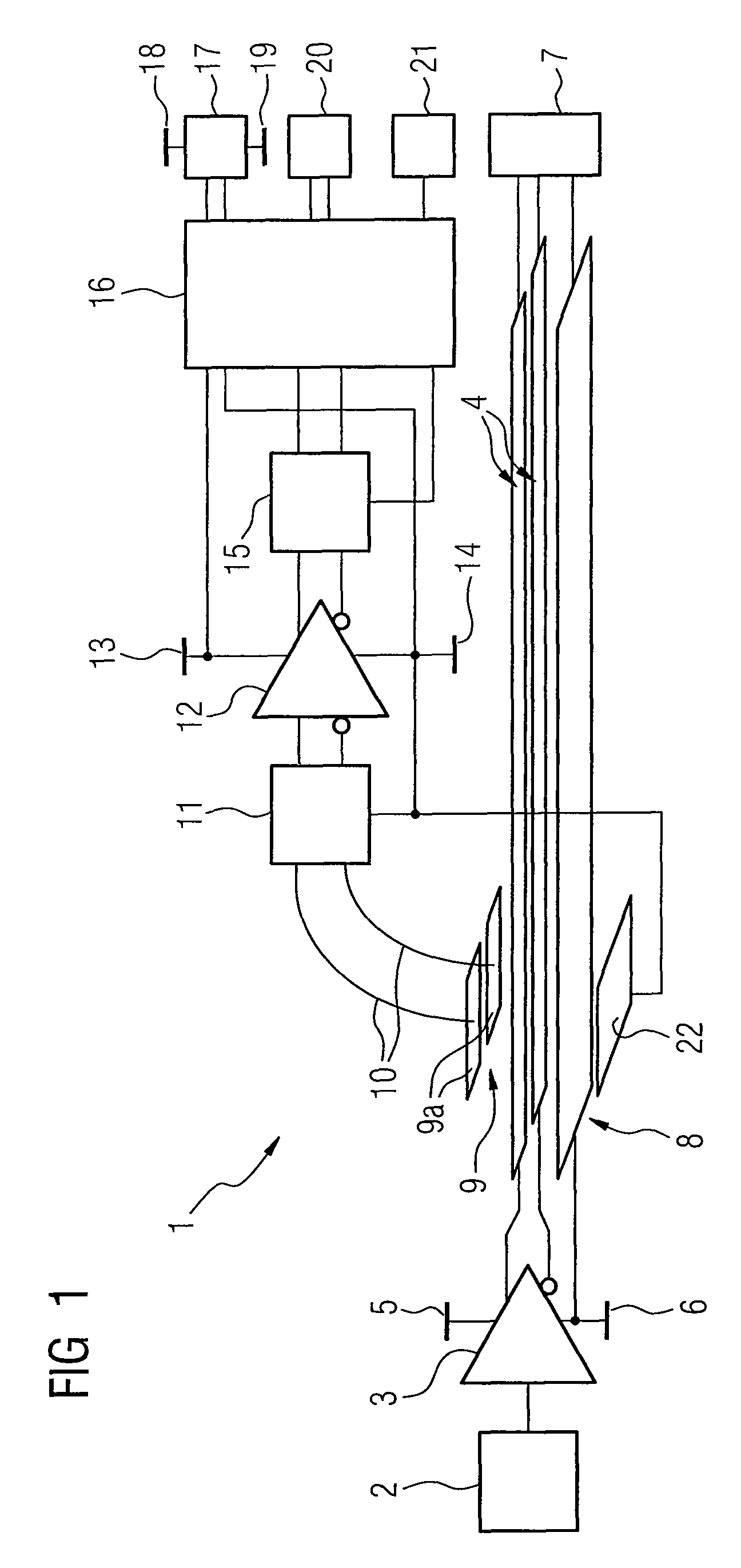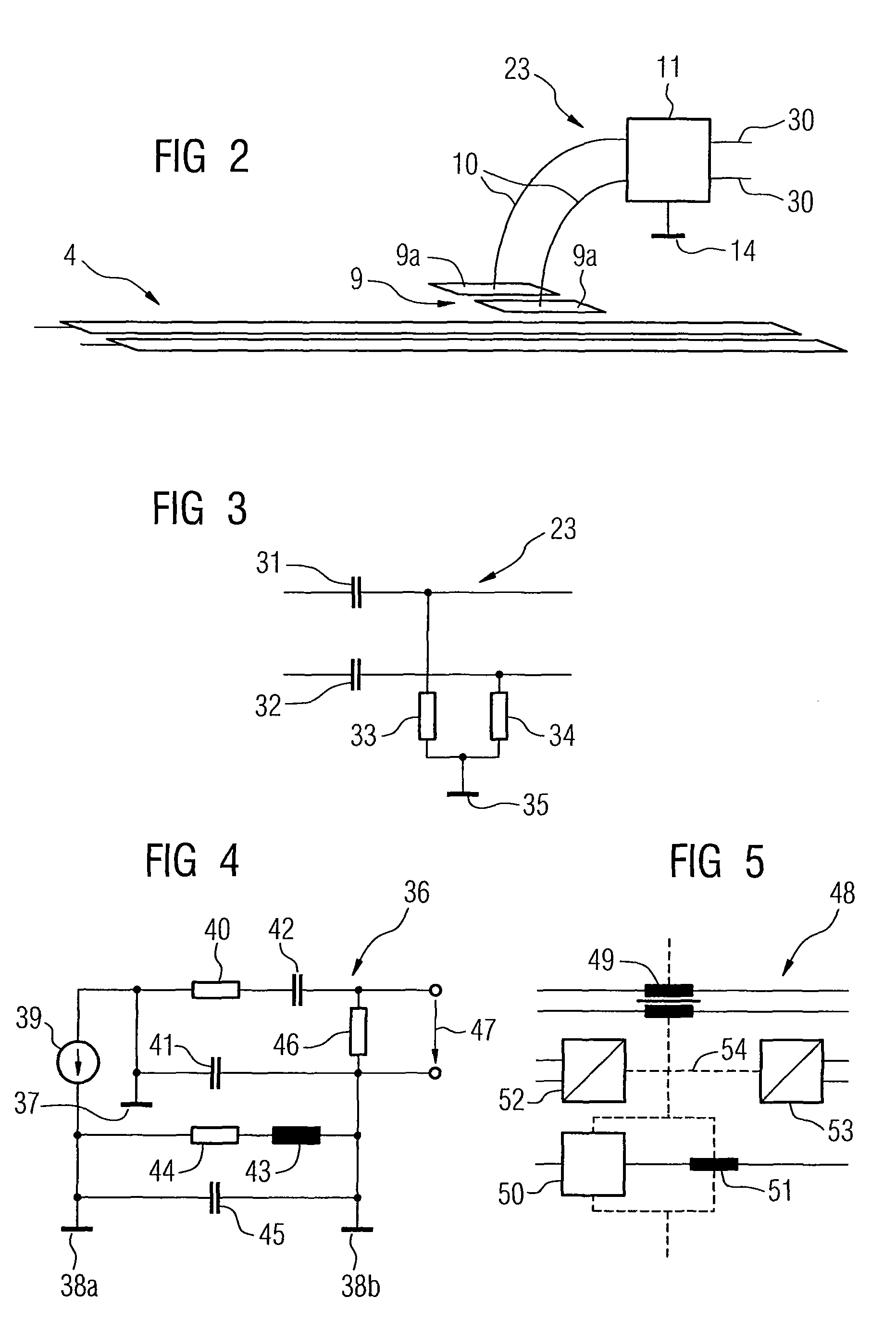Contactless transmission of a differential signal between a transmitter and a receiver
a technology of differential signal and transmission channel, which is applied in the direction of instruments, waveguide type devices, optical elements, etc., can solve the problems of affecting the transmission quality, affecting the operation of the transmission channel, so as to achieve the effect of suppressing the common-mode interference effect and optimum common-mode noise signal suppression
- Summary
- Abstract
- Description
- Claims
- Application Information
AI Technical Summary
Benefits of technology
Problems solved by technology
Method used
Image
Examples
Embodiment Construction
[0054]FIG. 1 shows a circuit arrangement 1 for executing a method.
[0055]This circuit arrangement 1 has a signal source 2, from which the signal or signals are fed with the aid of a line driver 3 as a differential driver with the polarity inverted with respect to one another into an antenna 4 with two inputs. The positive supply voltage 5 and the ground reference potential TX-GND 6 (ground reference potential of the transmitter) beside the supply voltage 5 are assigned to the line driver 3.
[0056]The antenna 4 is a homogeneous double line which has at its end a termination 7. The homogeneous double line of the antenna 4 is terminated by the termination 7 with the characteristic impedance. The signal is fed as described in differential mode into the antenna 4.
[0057]In the embodiment described here a further line 8 with the ground reference potential of the transmitter is taken in a homogeneous manner, for example, with geometric dimensions and material properties which are constant ove...
PUM
 Login to View More
Login to View More Abstract
Description
Claims
Application Information
 Login to View More
Login to View More - R&D
- Intellectual Property
- Life Sciences
- Materials
- Tech Scout
- Unparalleled Data Quality
- Higher Quality Content
- 60% Fewer Hallucinations
Browse by: Latest US Patents, China's latest patents, Technical Efficacy Thesaurus, Application Domain, Technology Topic, Popular Technical Reports.
© 2025 PatSnap. All rights reserved.Legal|Privacy policy|Modern Slavery Act Transparency Statement|Sitemap|About US| Contact US: help@patsnap.com



